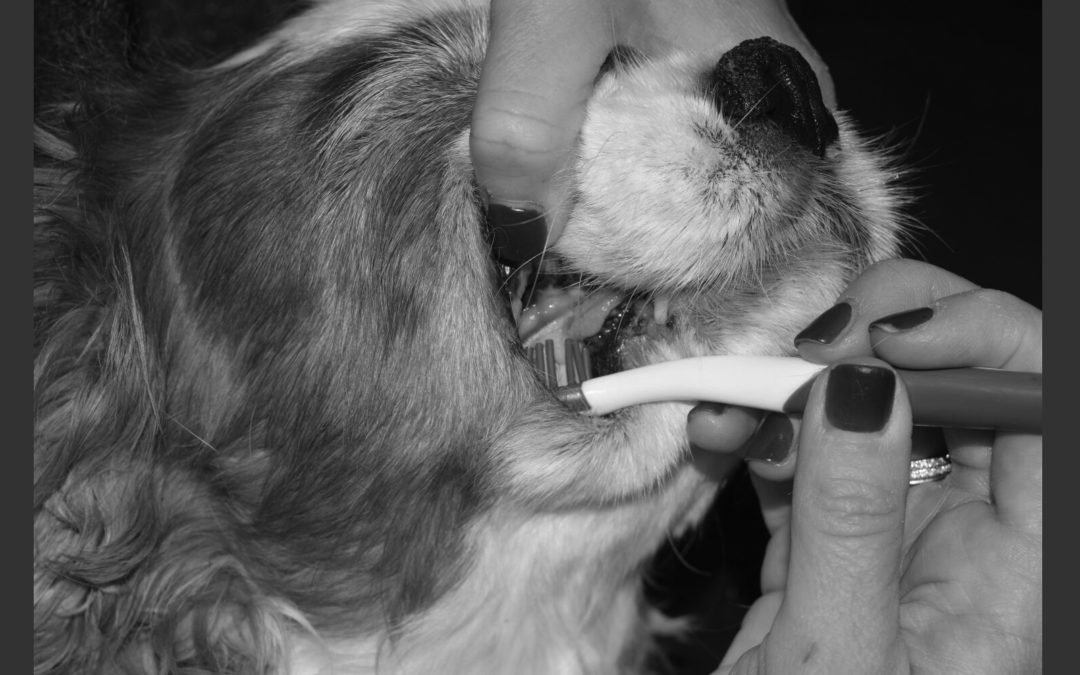What is Dental Disease?
Dental Disease is the most common clinical condition occurring in both adult dogs and cats. Did you know that 4 out of 5 dogs over the age of 3 years have some sort of periodontal disease? Dental disease not only affects the teeth but can cause internal problems as well. Dental disease begins when oral bacteria produce plaque. Minerals in the saliva harden the plaque into dental calculus or tartar, which firmly attaches to the teeth. Plaque and calculus can spread under the gum line causing gingivitis and periodontitis, and bacteria can then enter the bloodstream causing internal damage. This plaque and tartar should be removed from the teeth with a professional dental cleaning. After a professional dental cleaning, excellent oral health can be maintained at home with a consistent oral hygiene regimen. This regimen should focus on preventing bacteria and plaque build-up, and can be achieved through brushing your pets teeth.
How to Brush Your Pets’ Teeth
In-home dental care should include daily brushing using a proper pet toothpaste and toothbrush.
1. GET A PET TOOTHBRUSH
For large dogs use a toothbrush with a long handle, an angled head to better fit the mouth and soft bristles. A finger toothbrush that fits over the tip of your finger works well for smaller dogs and cats.
2. GET A PET TOOTHPASTE
The best pet toothpastes contain enzymes that help control plaque. We cannot use fluorinated toothpastes for humans in our pets. These contain enough fluoride to be toxic if swallowed daily. Additionally, some brands of human toothpaste contain xylitol, an artificial sweetener that is harmless to humans but toxic to dogs. Finally, a yummy poultry or beef flavored pet toothpaste may make it easier to get into their mouths.
3. NOW BRUSH!
Place the toothbrush with toothpaste into your pet’s mouth to get all the teeth brushed. Most pets accept brushing if they are approached in a gentle manner. If you can start when they are young, it’s quite easy, but even older pets will accept the process. Praise your pet after the process with dental chews or treats. Gently pull the upper lip upwards to expose the teeth. Place the toothbrush bristles at a 45-degree angle at the gum margin where the teeth and gums meet. In a back and forth motion, press the brush to the outward surfaces of the upper teeth and gum line. Move to the outward surfaces of the lower teeth and brush in the same back and forth motion. Don’t forget to brush all the teeth!
4. REPEAT DAILY.
If you can’t brush your pets’ teeth daily then several times a week is better than nothing. Dental chews, dental diets, dental water additives and dental wipes are also available for those who are unable to brush.

